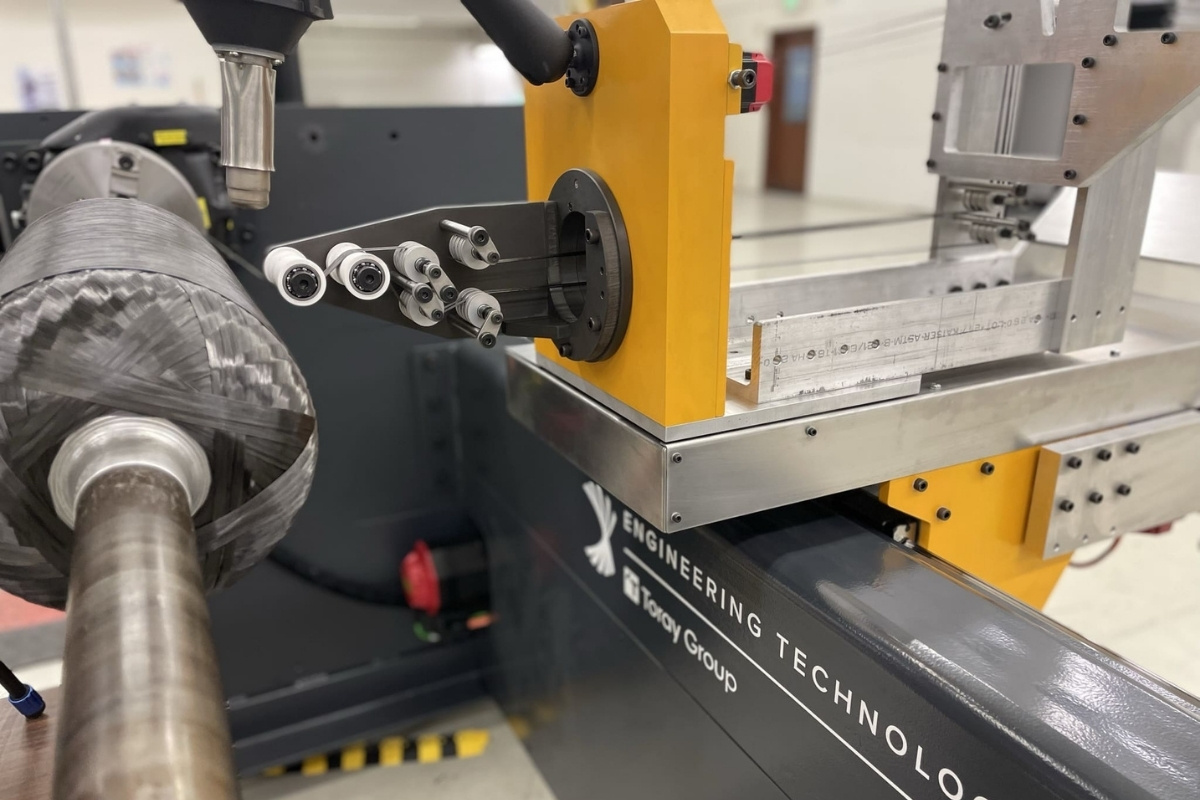
Ever wondered how those sleek, strong composite materials are made? Enter the filament winding machine. This fascinating piece of technology is a game-changer in manufacturing. It wraps fibers around a rotating mandrel, creating lightweight yet incredibly durable structures. Think of it as a high-tech spider spinning a web, but instead of silk, it uses materials like carbon fiber or fiberglass. These machines are pivotal in industries ranging from aerospace to sports equipment. Curious about the magic behind this marvel? Let's dive into 30 intriguing facts about filament winding machines that will leave you amazed!
What is a Filament Winding Machine?
A filament winding machine is a specialized device used to create composite materials by winding filaments, such as carbon fiber or fiberglass, around a rotating mandrel. This process is essential in manufacturing strong, lightweight structures for various industries, including aerospace, automotive, and sports equipment.
- Filament winding machines can produce complex shapes and structures, making them versatile for different applications.
- These machines use continuous filaments, which are stronger and more durable than chopped fibers.
- The winding process can be automated, ensuring precision and consistency in the final product.
- Filament winding machines can handle various materials, including carbon fiber, fiberglass, and aramid fibers.
- The tension of the filaments can be controlled, affecting the strength and properties of the final composite.
How Does Filament Winding Work?
Understanding the working mechanism of filament winding machines helps appreciate their importance in modern manufacturing.
- Filaments are impregnated with resin before being wound onto the mandrel, ensuring they stick together and form a solid structure.
- The mandrel rotates while the filament is wound around it, creating layers that build up the desired shape.
- The angle at which the filament is wound can be adjusted, affecting the strength and flexibility of the final product.
- After winding, the composite is cured, usually with heat, to harden the resin and solidify the structure.
- The mandrel is removed once the composite has cured, leaving a hollow, lightweight structure.
Applications of Filament Winding Machines
Filament winding machines are used in various industries due to their ability to produce strong, lightweight structures.
- In aerospace, they create components like rocket motor casings and pressure vessels.
- The automotive industry uses them to manufacture drive shafts, fuel tanks, and other lightweight parts.
- Sports equipment, such as golf club shafts and bicycle frames, benefit from the strength and lightness of filament-wound composites.
- Filament winding is also used in the production of pipes and tanks for chemical storage and transportation.
- Wind turbine blades are another application, where the strength-to-weight ratio is crucial.
Advantages of Filament Winding
Filament winding offers several benefits over other manufacturing methods, making it a preferred choice for many applications.
- The process allows for precise control over the placement and orientation of the filaments, resulting in optimized strength and performance.
- Filament winding can produce large, complex shapes that would be difficult or impossible to create with other methods.
- The automated nature of the process ensures consistent quality and reduces the risk of human error.
- Filament-wound composites are typically lighter and stronger than those made with traditional materials like metal or wood.
- The process generates less waste compared to other manufacturing methods, making it more environmentally friendly.
Challenges in Filament Winding
Despite its advantages, filament winding also presents some challenges that need to be addressed.
- The initial cost of filament winding machines can be high, making them a significant investment for manufacturers.
- The process requires precise control and monitoring to ensure the quality of the final product.
- Filament winding is not suitable for all shapes and sizes, limiting its applications in some cases.
- The curing process can be time-consuming, adding to the overall production time.
- Handling and storing the filaments can be challenging, as they need to be kept in optimal conditions to maintain their properties.
Future of Filament Winding
The future of filament winding looks promising, with advancements in technology and materials driving its growth.
- New materials, such as advanced carbon fibers and resins, are being developed to enhance the properties of filament-wound composites.
- Improved automation and control systems are making the process more efficient and reliable.
- The demand for lightweight, high-strength materials is increasing in various industries, driving the adoption of filament winding.
- Research is being conducted to develop new applications for filament winding, expanding its potential uses.
- Environmental concerns are pushing manufacturers to adopt more sustainable practices, and filament winding's low waste production makes it an attractive option.
The Final Spin
Filament winding machines are game-changers in manufacturing. They create strong, lightweight materials used in everything from aerospace to sports equipment. These machines work by winding fibers around a rotating mandrel, creating precise, durable products. They offer flexibility in design and material choice, making them invaluable in various industries.
Understanding how these machines operate and their applications can open doors to innovative solutions. Whether you're in engineering, manufacturing, or just curious, knowing these facts can give you a new appreciation for the technology shaping our world.
So, next time you see a high-performance bike or a cutting-edge aircraft, remember the role filament winding machines play. They’re not just tools; they’re the backbone of modern manufacturing, pushing the boundaries of what's possible. Keep exploring, stay curious, and who knows? You might just wind up creating something amazing yourself.
Was this page helpful?
Our commitment to delivering trustworthy and engaging content is at the heart of what we do. Each fact on our site is contributed by real users like you, bringing a wealth of diverse insights and information. To ensure the highest standards of accuracy and reliability, our dedicated editors meticulously review each submission. This process guarantees that the facts we share are not only fascinating but also credible. Trust in our commitment to quality and authenticity as you explore and learn with us.
